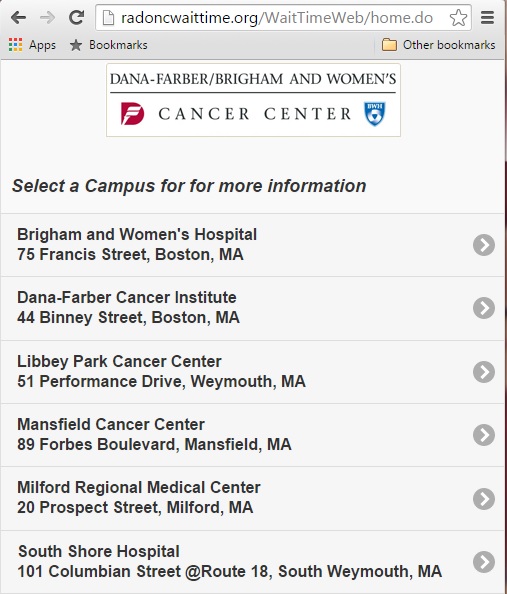Digital Health Group Helps Innovators Develop New Tools
It seemed like a simple request. Back in 2005, Joseph Killoran, PhD, a medical physicist in the Department of Radiation Oncology, created a popular application that informed patients of current treatment wait times. But it had one problem: patients, many of whom needed daily treatment, could only view the wait times once they were at the hospital.
One day, a patient asked Jay Harris, MD, former department chair, if it would be possible to view this information online before leaving home. And if the wait times could be displayed on a website, could they also be displayed on a smartphone app so that patients could check them on the fly?
As the wait time app bloomed into something more than an internal tool, Killoran found himself wading into uncharted territory. He wanted to go through proper channels to expand the reach of the app, without compromising security or privacy. He knew that information systems resources could make this possible but didn’t know how to navigate them. The process of connecting with the right people was made easier when Killoran’s colleague, Neil Martin, MD, MPH, contacted Adam Landman, MD, MS, MIS, MHS.
That’s how Killoran learned of the BWHC Information Systems (IS) Digital Health Innovation Group (DHIG). Led by Landman and Donna Fraser, senior project specialist, DHIG supports BWH researchers, clinicians and staff who seek to use digital health technologies in their practice or research.
“One of the challenges of being an innovator is that you are doing things for the first time, and it’s not easy to find out how to get the assistance that you need,” said Fraser. “We’re trying to be a point of contact within IS that can help get innovators to the right services and the right contacts and follow up if they’re having any issues.”
“Adam and Donna were my advocates,” said Killoran. “The overall process was challenging—it took five months and involved assistance from many different groups—but in the end, we were able to connect with the right people and meet our goal of developing an accessible site that meets Partners standards.”
DHIG offers this assistance to all innovators and works closely with the Brigham Innovation Hub. In addition to Landman and Fraser, DHIG also includes representatives from research, Partners IS Information Security, Partners eCare and Materials Management. “We can help throughout the entire lifecycle of an idea,” said Fraser.
DHIG has supported several other groups and researchers around the hospital, including Katherine Rose, MD, who began a pilot project with Twine Health, a software platform for chronic-disease management, to empower patients to manage hypertension and other conditions. It has also supported Stephanie Shine, BSN, RN, who adapted Google Glass technology to allow new mothers to see their baby in the NICU.
Landman and Fraser want the entire clinical and research community to know that DHIG is here to help BWHers develop new applications to address important hospital challenges.
“This group was formed to help BWHC leverage digital health technologies safely and efficiently to improve health care delivery and facilitate research discoveries,” said Landman.
To learn more, email BWHCDigitalHealthSupport@partners.org.


Leave a Reply